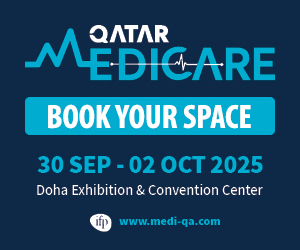Qatar’s healthcare sector is on track for significant growth, with overall health expenditure forecast to expand at a compound annual growth rate (CAGR) of 14% by 2029, reaching $11.5 billion (QR42 billion), according to a recent Fitch Solutions report.
Experts point out that this surge would elevate Qatar to the position of the third-largest healthcare market within the Gulf Cooperation Council (GCC) and the tenth-largest across the Middle East and North Africa (MENA).
The country’s National Development Strategy 2024–2030 is driving public investment in healthcare, while the private sector continues to benefit from robust per capita spending and a growing number of public-private partnerships.
“Qatar has effectively encouraged private sector engagement while maintaining strong public oversight,” added Dr. Kurian. She highlighted initiatives like Surgi Art Hospital as evidence that collaboration is fostering innovation in patient care.
Digital transformation is also playing a crucial role in improving service delivery. Government-led efforts such as the Smart Programme (TASMU) are harnessing big data, artificial intelligence, and integrated electronic health records to streamline care and reduce bottlenecks.
In July 2024, authorities signed an agreement with AI company Lunit to deploy AI-powered breast cancer screening across primary health centers. This initiative is expected to boost early detection rates and lower long-term healthcare costs.
“Investing in AI diagnostics isn’t just about adopting cutting-edge technology—it’s about building a sustainable system,” said Dr. Kurian. “Early diagnosis leads to better outcomes and lower costs, which is essential for the system’s long-term viability.”
She further emphasized that technology alone is not enough. “Without skilled, well-supported professionals, even the most advanced tools will never reach their full potential.”
As Qatar aims to establish itself as a regional hub for high-value healthcare, finding the right balance among innovation, infrastructure, and human capital will be key.
Researchers also stress that the next stage of development should prioritize resilience, ensuring digital tools, regulations, and a capable workforce work seamlessly together to deliver quality care to a changing population.
With its solid fiscal footing, high per capita income, and clear strategy for healthcare progress, Qatar is emerging as an increasingly attractive destination for international investors, healthcare firms, and research organizations.
Source: The Peninsula, 27 June
















































































